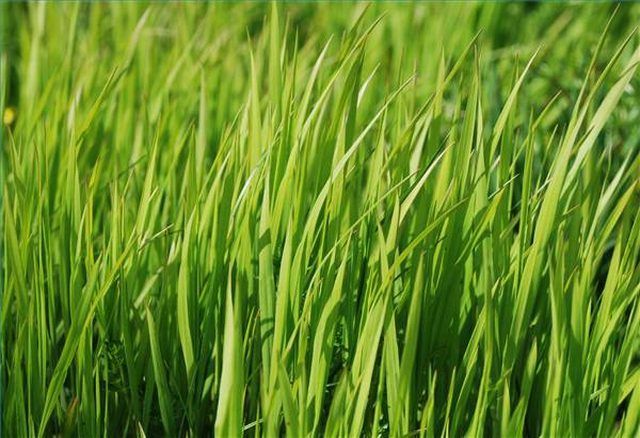Bulbs
Flower Basics
Flower Beds & Specialty Gardens
Flower Garden
Garden Furniture
Garden Gnomes
Garden Seeds
Garden Sheds
Garden Statues
Garden Tools & Supplies
Gardening Basics
Green & Organic
Groundcovers & Vines
Growing Annuals
Growing Basil
Growing Beans
Growing Berries
Growing Blueberries
Growing Cactus
Growing Corn
Growing Cotton
Growing Edibles
Growing Flowers
Growing Garlic
Growing Grapes
Growing Grass
Growing Herbs
Growing Jasmine
Growing Mint
Growing Mushrooms
Orchids
Growing Peanuts
Growing Perennials
Growing Plants
Growing Rosemary
Growing Roses
Growing Strawberries
Growing Sunflowers
Growing Thyme
Growing Tomatoes
Growing Tulips
Growing Vegetables
Herb Basics
Herb Garden
Indoor Growing
Landscaping Basics
Landscaping Patios
Landscaping Plants
Landscaping Shrubs
Landscaping Trees
Landscaping Walks & Pathways
Lawn Basics
Lawn Maintenance
Lawn Mowers
Lawn Ornaments
Lawn Planting
Lawn Tools
Outdoor Growing
Overall Landscape Planning
Pests, Weeds & Problems
Plant Basics
Rock Garden
Rose Garden
Shrubs
Soil
Specialty Gardens
Trees
Vegetable Garden
Yard Maintenance
How to Make a Perfect Lawn With No Weeds
How to Make a Perfect Lawn With No Weeds. Dandelions might make for good wine, but they sure don't make for a pretty lawn. Fortunately, there's a way to fight back when weeds overtake your turf. You'll start by removing the perpetrators. But a perfect lawn is about more than just killing parasitic plants---it's about preventing them. Some extra...

Dandelions might make for good wine, but they sure don't make for a pretty lawn. Fortunately, there's a way to fight back when weeds overtake your turf. You'll start by removing the perpetrators. But a perfect lawn is about more than just killing parasitic plants---it's about preventing them. Some extra effort in the maintenance department will go a long way toward restoring your lawn to its green glory.
Things You'll Need
Post-emergent herbicide
Pre-emergent herbicide
Turf fertilizer
Fertilizer spreader
Garden hose
Lawn sprinklers
Lawn mower
Garden gloves
Respirator mask
Removing Weeds
Assess your current lawn. In most cases, you can revive a lawn by removing weeds and taking preventive measures. However, if weeds make up more than half your lawn, consider starting fresh by reseeding or rolling out sod.
Identify whether the weeds in your yard are grassy or broadleaf. As their names imply, grassy weeds have blades (think crabgrass, foxtail and sedges), while broadleaf weeds have veined leaves (think dandelion, chickweed and clover).
Purchase a mild post-emergent herbicide made for your type of weeds. Make sure the bottle indicates that the product kills weeds, but not grass (Roundup, for instance, would be too strong). Apply the herbicide directly to weeds. For an organic alternative, you may choose to remove weeds the old-fashioned way---with your hands, garden gloves and cutting tools.
Preventing Weeds
Apply a pre-emergent herbicide each spring. This will prevent new weeds from cropping up when the weather warms, while still allowing grass to sprout.
Mow often, but cut blades to no less than 2-? or 3 inches tall each time. Mowing is about achieving a balance. Cut too low, and blades will grow rapidly to reach sunlight, instead of spreading out and strengthening roots. This weakens grass and invites weeds. But mow too infrequently, and your tall lawn will prevent proper aeration, roots will weaken and weeds will also overwhelm. It might seem like a lot of effort at first, but the payoff is healthier grass that is better able to box out weeds.
Water deeply but infrequently to encourage strong root growth. Watering too little, too often can weaken roots, allowing weeds to spread. Water enough to moisten soil about 6 inches deep, but not enough to flood the lawn (which can lead to diseased roots). Try a prolonged watering every few days at first, and adjust based on your lawn's reaction.
Fertilize with a product made for your type of lawn at least twice per year, in the spring and fall. For a lawn that needs extra help, you can fertilize every 4 to 6 weeks fall through spring. Avoid fertilizing in summer, though, as it will only encourage weed growth.
Tips & Warnings
Water your lawn prior to fertilization to avoid damage.
Be careful to select the proper amount of fertilizer for your lawn's size. Apply it evenly with a spreader.
Replace dull mower blades with sharp new blades. A cleaner cut means healthier grass.
Check to see if your turf is the best variety for your climate and the amount of sun your yard receives. If not, replacing it might be the easiest way to revive your lawn.
Wear gloves and a respirator mask when applying chemicals like fertilizer and herbicides.